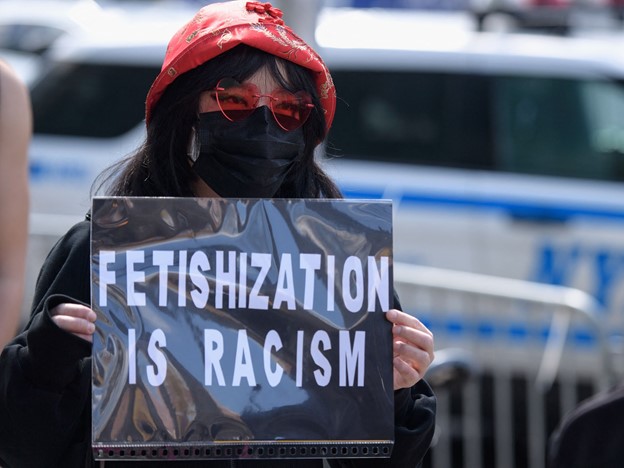Asian Americans face discrimination much like other minorities in the US. A rise in hate crimes of over 70% was recorded between 2019 and 2020, which some have linked to the COVID-19 outbreak that originated in China.
Apart from increased hate crimes, stereotypes concerning Asians as having small eyes or being intellectual are also prevalent; there are more delicate connections between race and gender, even if these are more prominent cases of Asian people receiving unfair treatment.
One specific hate crime in 2021 led to the untimely deaths of eight women, six of whom were Asian; the number clearly shows that Asian women were the target of this crime, despite some people’s attempts to dismiss it as a coincidence.
Although it might seem like a one-off, American culture fetishizes Asian women and labels them “exotic,” a derogatory term with racial overtones.
For many years, Asian women have been presented in an exploited manner. This stereotype of Asian women as submissive or sensual, popularized in old-timey films where they were frequently symbolized as courtesans, persists in Japanese animation, also known as anime.
Anime can represent diversity in American popular culture, but it also has a negative side because the young characters are objectified and infantilized in the cartoons.
This problem doesn’t just pertain to finding Asian culture attractive or appealing. Instead, these seemingly harmless plays gave rise to a complete culture that promotes paedophilia, sometimes discreetly under the pretence of a character being hundreds of years old and other times outright, as well as depicting Asian women as powerless and childlike.
Because of these assumptions about Asian women that are widely accepted in American media, these women are more likely to become targets of discrimination and crime.
Given how cartoons sometimes portray women, it becomes appropriate for viewers to make assumptions about fictional characters to the people they know. Asian women are especially singled out for objectification by men in the media compared to other women.
Unfortunately, it is challenging to get rid of these assumptions. People do not even understand how much women are objectified since they have been in the media for a long time. However, it may seem unnoticeable until anime is viewed differently.
And anime is not the end of it, either. The damage caused by how Asian women are depicted in anime has already been done, and it has been done for more than a century, long before anime became well-known in the United States.
Sensitivity and media literacy can lessen the damage caused by partial portrayals of women. Americans need to look at how contemporary and ancient pop culture has promoted these preconceptions and see this as a bias towards entire ethnic groups.





Comments are closed.